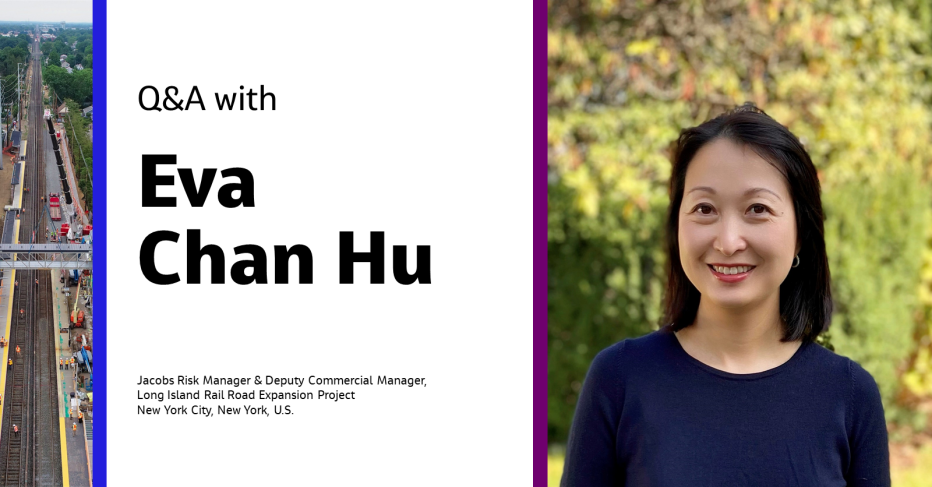
When you’re up against a critical deadline and must deliver on time and on budget, how do you overcome the unexpected, such as COVID-19 wreaking havoc on our worldwide supply chain? Jacobs’ Risk Manager, Eva Chan Hu, explains how in this Q&A.
Let’s get started:
Tell us about what you’ve been working on.
I’ve been working on the Long Island Rail Road (LIRR) Expansion Project – Floral Park to Hicksville for New York’s Metropolitan Transportation Authority (MTA), which adds an additional 9.8-mile third track to LIRR’s Main Line and increases passenger capacity by 50 percent. The expansion also helps alleviate congestion during peak riding hours, improve overall rail services and enhance rider and vehicle safety.
Jacobs is working with our joint venture (JV) partner, Arup, as the project management consultant for MTA Construction & Development (MTA C&D), where we provide project management oversight that includes commercial, risk, public outreach, rail operations and digital information management. Our JV also provides compliance oversight for design, construction, quality, safety and security.
I joined the project in early 2018, and I’ve had a few different roles along the way. I started on the contract management side managing 20 sub-consultants. From there, I moved into a risk manager role, and now I’m the deputy commercial manager supporting Diaa Elmaddah, Jacobs’ program manager. It’s my responsibility to look at the financial front and any commercial issues that might arise.
Your expertise is in risk. Can you describe what risks come with a mega-project such as this and why it’s important to mitigate them?
Risk management plays a critical role on a mega-project like the LIRR Expansion Project. We have to be five steps ahead, thinking of possible outcomes and discussing each of them with the team, anticipating every scenario. Some risks can’t be mitigated, so how can we manage them?
A high-profile project of this size and magnitude carries a lot of risk because the project itself draws community attention. It’s our job to make sure it’s delivered on time and on budget, helping us protect our client’s reputation. We’re also working with a compressed timeline —that’s a big risk on its own. In addition, the project’s physical constraints also have risk. We’re not starting from scratch — we’re working with an existing, functioning railroad where operations must be maintained each day. LIRR is one of the busiest railroads in the country, so how can we maintain safety and operations while we’re building at the same time? These are all types of operational risk.
There’s also quite a bit of financial risk that comes with a project this size. How can we provide oversight and direction while also preventing cost overruns? How can we work with the design-builder to circumvent claims?
The project’s location impacts people’s daily lives; in some cases, we’re working right next to their back yards, affecting homes and businesses. A lot of people depend on the train to get from Long Island to Manhattan for work, so how can we make sure we don’t have a train stoppage when people are trying to get to work? We’re always working within the constraints; in this case, making sure service is maintained during those peak commute hours. The effort is huge, so our train operations team has daily conversations with the design-builder and plans every detail carefully.
One of the big challenges has been eliminating the rail grade crossings, which must be done within 48 hours so that we don’t impact the morning commute. It requires a Friday night start and must be finished before Monday morning’s peak hours. All of this is a huge risk and requires a lot of coordination.
What has been your biggest challenge?
Without a doubt, the COVID-19 pandemic was our biggest challenge. At the end of 2019, we started to hear about something happening in China; there was talk of a virus. I’m from Hong Kong, and many years ago, the city experienced a small outbreak of severe acute respiratory syndrome (SARS). I heard about what was going on in Wuhan, and it reminded me of the SARS outbreak. I alerted the team, telling them it had the potential to become a serious issue. We started discussing possible risks, one of which was how the virus might impact the supply chain. Of course, none of us knew we were facing a pandemic, but as the virus spread, we moved from risk management to crisis management, and before we knew it, we were working remotely.
In the construction industry, everybody is used to working full-time at the site. In a matter of days, we established systems and ways of communicating — an entire new working environment — because stopping work on the project wasn’t an option.
We experienced some supply chain challenges, but I give much credit to those team members who worked in the field once it was safe to do so. They went above and beyond for the project and broader team, and their dedication helped us pull through without any project delays.
How is the LIRR Expansion Project going to benefit New Yorkers?
There are many positive benefits. This railroad was built 100 years ago when the population was much smaller so having only two tracks — one going east and one going west — worked. But as the population grew, so did demand. The railroad was already being run at capacity, and if anything happened, with just two tracks, everything came to a halt. A fallen tree, bad weather, icy conditions, a train breaking down — the railroad stops. The new third track serves as a buffer so if something happens, a backup is available to handle the load.
The expansion also increases capacity by 50 percent, with commute times reduced by almost 40 minutes, saving time and providing reliability. We’re also bringing five LIRR train stations to modern-day standards, making them accessible according to the Americans with Disabilities Act.
Eliminating the eight at-grade crossings is critical for safety. When the railroad was built, the crossings were located at-grade, so in essence, the railroad is being “shared” with those who drive vehicles. On a busy commuter morning, drivers have to wait for the train to go by to pass over the tracks safely. If they only have a few minutes to cross, they might be tempted to jump the red light, and this creates a huge safety issue.
-
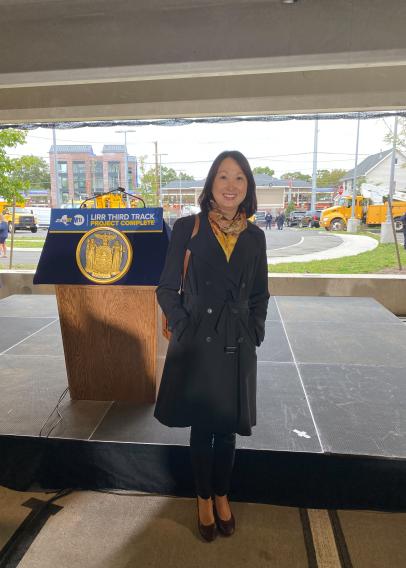
Eva at the LIRR Third Track Opening – October 4, 2022
-
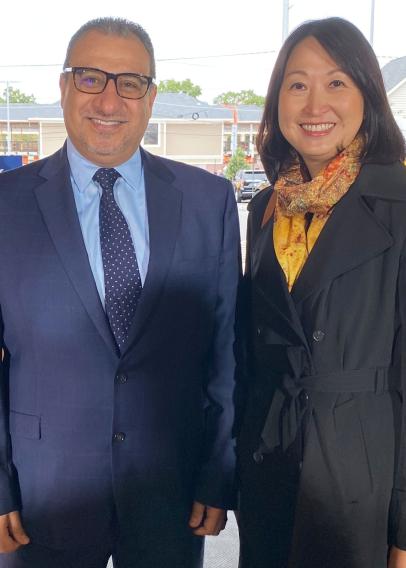
Eva and Program Manager Diaa Elmaddah at the LIRR Third Track Opening – October 4, 2022
“I enjoy working on every single little detail, from gathering a team of talented staff to helping our client to manage the project and establishing a dashboard for various management tools, to making sure construction gets done on time and within budget. ”
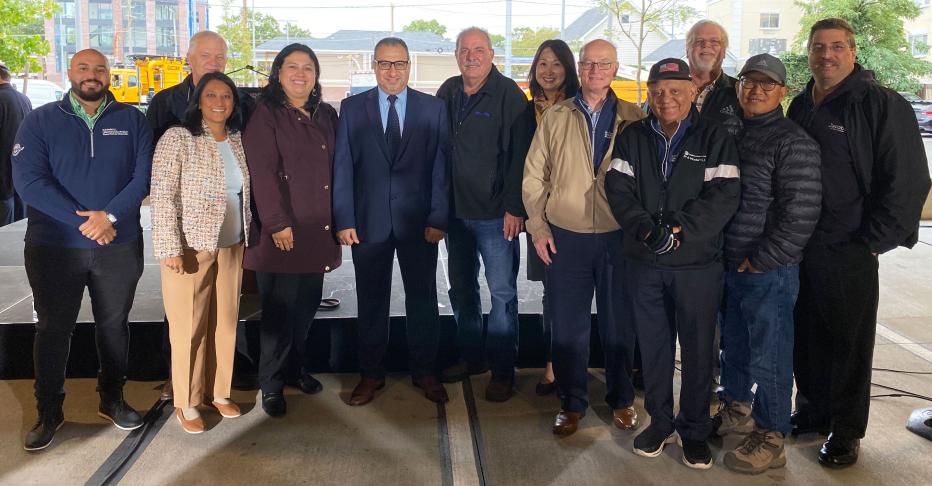
Team photo at LIRR Third Track Opening – October 4, 2022
Looking back over your career, what other programs and projects have you been involved with?
With my knowledge in public-private partnerships, a lot of my work prior to LIRR was as a strategic consultant. I worked on an interesting project in Mexico near the coastline and beach resorts to evaluate the use of toll roads to improve infrastructure, and I got to spend a lot of time in Mexico City.
Another project I enjoyed was working on alternatives to remove height restrictions for a bridge connecting New Jersey to Staten Island in New York. With freight vessels getting bigger and taller, our client anticipated that future Panamax cargo ships would not be able to pass under the bridge because there wasn’t enough clearance. Jacobs conducted a regional cost benefit analysis study, proposing ten different engineering scenarios. Working with engineers, maritime experts and economists, my role was to set up benefit-cost models for each alternative. Our analysis showed that our proposed alternative to “lift” the bridge would bring in the most incremental benefits. Our client accepted our recommendation and raised the bridge deck. Every time I pass by the bridge, I think, I got to work on that project! It brings a lot of satisfaction to know I made a positive impact on the area where I work and live.
Of course, working on the LIRR project has been a big highlight too. I enjoy working on every single little detail, from gathering a team of talented staff to helping our client to manage the project and establishing a dashboard for various management tools, to making sure construction gets done on time and within budget. It’s been challenging but so rewarding to see it come to fruition. LIRR Expansion Project is a successful story and we’re so happy to be part of it.
How long have you worked for Jacobs, and what did you study?
I came to Jacobs through two acquisitions, and in total, I’ve been with Jacobs for 15 years, although I have nearly 25 years of professional experience. I have a degree in civil engineering, and I earned a master’s degree in finance and management because I had interest in those areas. Having that well-rounded education has helped me shift my career into areas I enjoy, such as planning, benefit cost analysis, financial modeling and risk management.
What advice would you give to those considering a STEAM-focused career?
I started as a civil engineer because I wanted to build things, but I quickly learned engineering encompasses so much, even down to planning sewage and drinking water lines. Young professionals should know every single role is important because they play a part in improving people’s lives. Also, by choosing a STEAM career, with so many career options, they will never get bored. I’ve had the opportunity to do many things — from design and planning to risk and commercial management. They shouldn’t be afraid to try something new and to speak up if they’re interested in a new challenge.
What do you enjoy most about being part of Jacobs?
Jacobs gives employees the support they need to do their job. The company also places value on inclusion and diversity. I work in a traditionally male-dominated industry. Jacobs’ culture is very different; many of my colleagues, including in senior roles, are women. I recently had an opportunity to attend an event for the Women Builders Council. Our entire table of ten women were from Jacobs, and there was some really amazing talent. We got to talk about our careers, and I think this is one of the reasons people like to work for — and stay with — Jacobs. The company encourages you to envision what you want to do and supports you to achieve it.
You might be interested in...
-
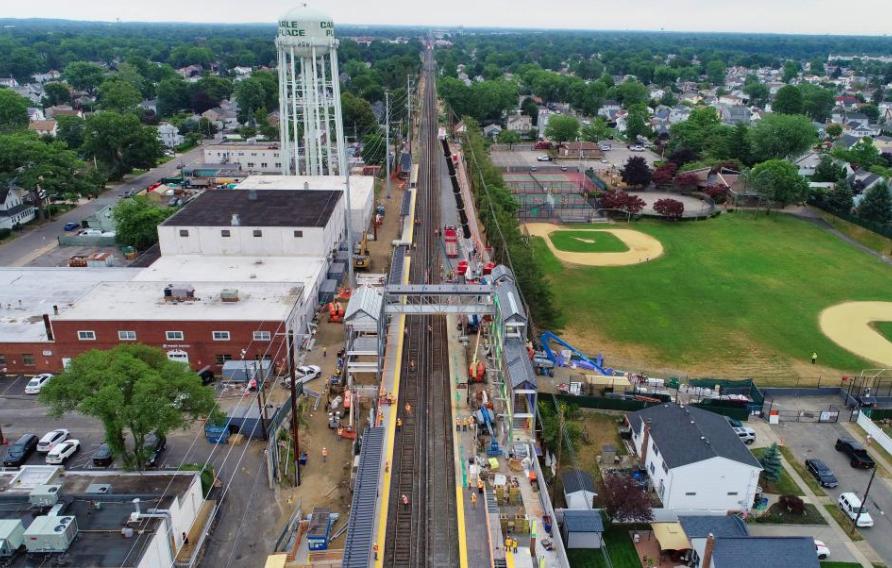 Showcase
ShowcaseLong Island Rail Road Expansion (LIRR), Long Island, New York
Expansion to America’s busiest commuter railroad comes on time and under budget
-
 News
NewsLong Island Rail Road Expansion Opens in New York
A major expansion to the Long Island Rail Road (LIRR)’s Main Line is now open to the public. Extending from Floral Park to Hicksville, New York, the 9.8-mile third track expansion to the LIRR Main Line increases capacity by 50%, alleviates congestion during peak hours, improves overall rail services and enhances rider safety. Read more to find out about this iconic project.
-
 News
NewsJacobs Receives Contract for East Side Access Tunnel and Rail Work in New York City
Jacobs Engineering Group Inc. announced today that it and its joint venture partner, LiRo Engineers, Inc., received a contract from the Metropolitan Transportation Authority Capital Construction Company to provide consultant construction management services for the East Side Access project in New York City, N.Y.
-
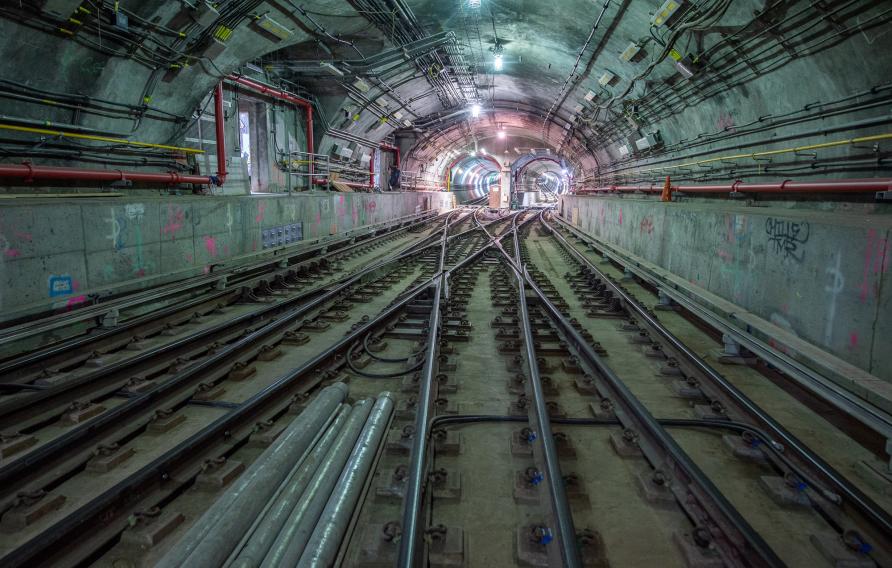 Showcase
ShowcaseGrand Central Madison
The Metropolitan Transportation Authority’s largest capital project is set to transform the busiest commuter railroad in the U.S., easing congestion and dramatically reducing commute times for New York City rail users.
-
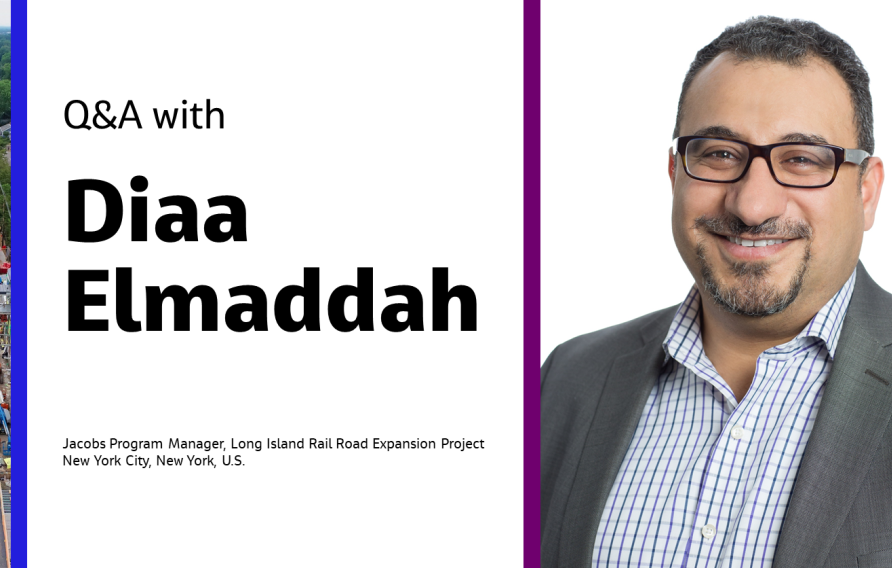 News
NewsDesign-Build Delivery: A Q&A with Jacobs Program Manager Diaa Elmaddah
Jacobs Program Manager Diaa Elmaddah discusses how design-build delivery, team co-location and digital tools played a critical role in the on-time, on-budget Long Island Rail Road Expansion Project. Get to know Diaa in this Q&A.
Construction Dive: Jacobs project manager helped bring $2.5B NY transit project in on time
Join #OurJacobs team
What drives you drives us as we work to build a better world – together. At Jacobs, every day is an opportunity to make the world better, more connected, more sustainable. We’re always looking for dynamic and engaged people to join our team. Bring your passion, your ingenuity and your vision.













































